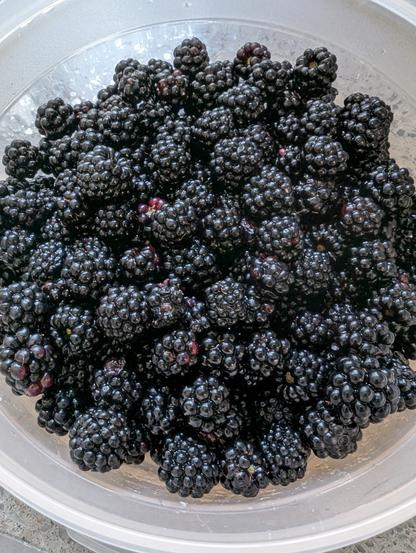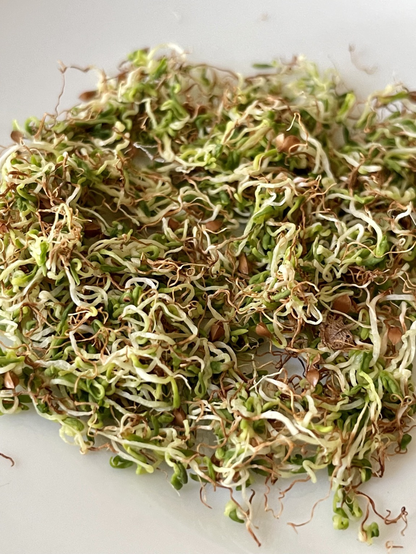The young leaves of Rumex crispus (curly dock) are great in a salad, but I wanted to experiment a bit this season with the seeds. Most people who forage this part of the plant grind the seeds into a flour to use for crackers or alongside other flours for various baked goods. But those same people also remark on its bitterness in those applications. I’ve been sprouting seeds and beans at home all year and have been thinking about how I can make that a more sustainable practice (such as foraging my own seeds to sprout), so I figured it would be a worthwhile experiment to see how well curly dock seeds sprout (and how good they taste!). Especially since curly dock grows all over the place out here, often ignored and/or disdained. And it was a success! These photos are in reverse order: days 7, 5, 3, 1, and an initial shot of the seeds/chaff. They took a few days longer than the commercial blends I usually sprout, so I might try a longer soak at first to help with that next time. The flavor is great. Sweeter and not as bitter compared to commercial blends, which took me by surprise. They’re delicate. And a little stringy, but I usually find that to be the case with smaller seeds anyway. And these seeds are quite small. Winnowing didn’t do a whole lot to separate the chaff entirely (maybe too much static between the buckets I was using?), but I found that stirring them in water after rubbing them between my hands helped: most of the seeds sank and the chaff floated to the top. A combination of various sieves might work next time as well. Anything to help catch the papery chaff and let the tiny seeds fall through without too much additional debris.
#dock #curlydock #rumex #foraging #foragedfood #urbanforaging #wildfood #wildedibles #sprouts #seeds #sustainability #sustainable #sustainableliving




